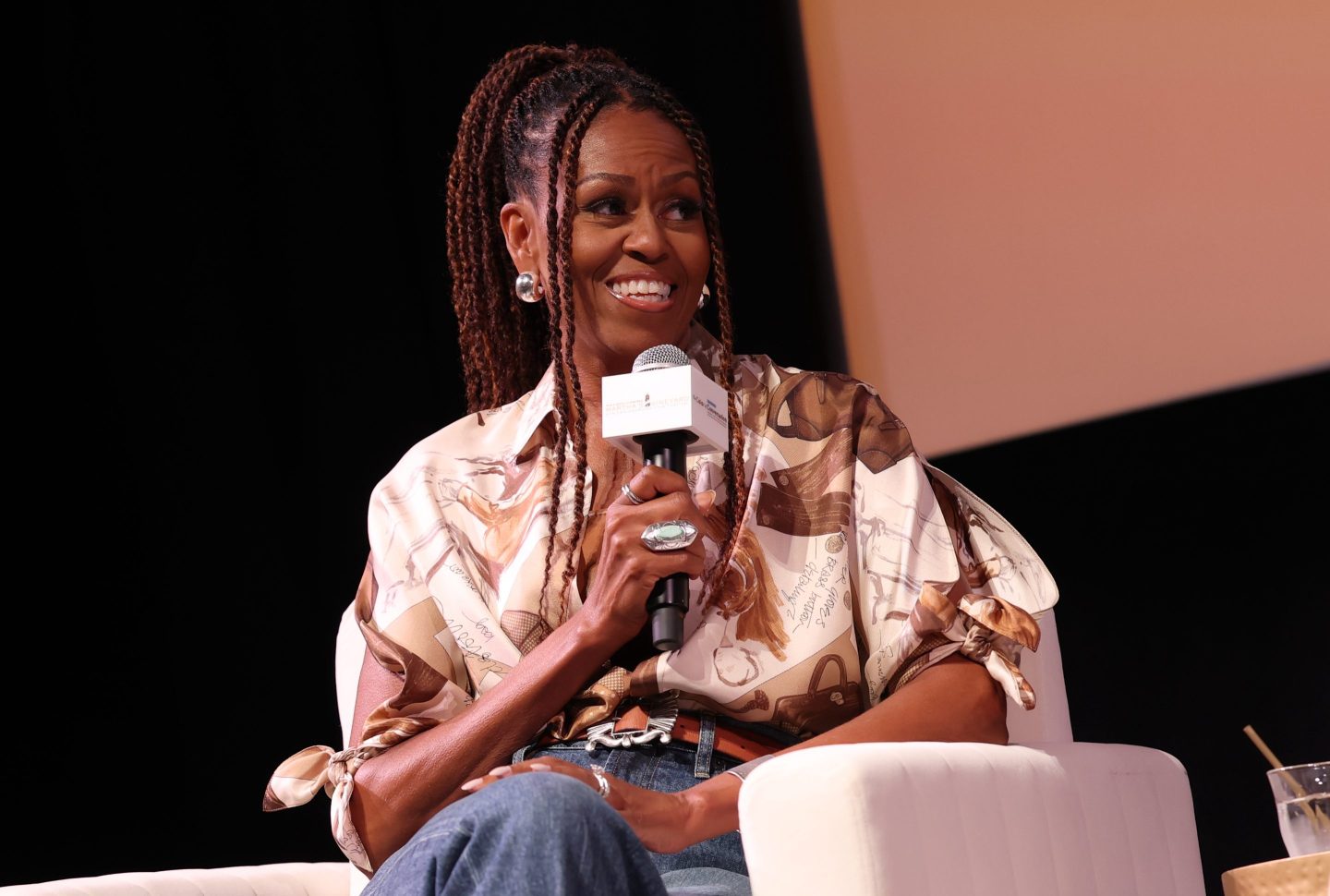Professionals don’t know how to dress for their jobs anymore. Since the COVID-19 pandemic, workwear has relaxed, and the playbook for dressing for success has changed. It’s caused a lot of uncertainty—but former U.S. First Lady Michelle Obama shared her styling tips on how to dress for the job.
“I do not pick something that doesn’t make me feel good,” Obama recently said in conversation with Tracee Ellis Ross about her new book, The Look. “I never wear something to follow a trend. I wear things that make me feel beautiful. That is probably the first criterion.”
Obama spoke about how style has evolved throughout her decades-long career across law, education, and government. The Harvard-educated attorney specialized in entertainment law at high-powered firm Sidley Austin, served as the assistant to Chicago’s mayor, and was the associate dean of students at the University of Chicago.
In 2008, she went on to become the 44th First Lady of the U.S. beside her husband, former President Barack Obama. During those eight years in the political spotlight, she frequently donned “little lady dresses”—a style she pivoted from when promoting her previous book, Becoming, back in 2018. That time around, she toured the country in pants and glamor suits. Her style continued to evolve depending on what work she was doing at the time. When showcasing her book The Light We Carry in 2022, Obama said she rolled up to events in relaxed, urban attire with her hair braided to fit the more personal atmosphere of the smaller venues. She made the clothes work for her—it’s one less thing to worry about when getting the job done.
“All of those iterations are me,” Obama continued. “I wear things that allow me to forget about what I’m wearing and do the work…I tend not to worry about that once I’m in a moment.”
Michelle Obama’s number one styling hack: tailoring
Obama’s evolving style has proved there is no one-size-fits-all method in looking the part for work. But there is one universal trick she said everyone should follow, whether they’re showing up to the office wearing a luxury power suit or inexpensive outfits.
“One of the things I learned is that it’s worth getting your stuff tailored,” Obama said. “If you’re looking for any kind of hack, that’s the biggest one. Rarely does anybody fit the dress size. We are all too diverse in our sizes…We did that with Target dresses and J.Crew. Everything was tailored so that it fit me the way it should.”
The author said the trick can make the most affordable clothes look “clean and sleek,” even if it means getting a t-shirt tucked in. She advised people to go to their local dry cleaners for tailoring: Seamstresses can cut off or add fabric, make sleeves the right lengths, make sure links work, and more. Getting her clothes fitted ensures she can step into any style and the clothes are perfectly aligned to her body type and aesthetic preferences.
“All of that stuff matters,” Obama explained. “All of that makes all [of] these different styles accessible to me, because they’re all parts of who I am.”
Workers are lost on how to dress for their jobs
Obama’s advice is welcome as many professionals struggle to make sense of what to wear to work. About 78% of staffers are seeking guidance on what to wear at work, according to a 2025 report from workplace solutions company IWG. And many younger employees have been left in the dark: Around 94% of Gen Z seek advice on their work outfits, compared to 84% of millennials, 70% of Gen Xers, and 61% of baby boomers.
Experts have told Fortune a lot of this aesthetic uncertainty came about post-pandemic; workers were clocking in remotely for over a year, and many realized how much more comfortable they were in casual clothing. Once dragged back into the office, they wanted to bring their laid-back attire with them—and it worked, with casual styling elements becoming the new normal. Employees ditched heels, dresses, and neckties for luxe sneakers and jeans.
“Workwear is never going back to its suit-and-tie days, although that can be fun to dabble in,” Diana Tsui, a stylist and creative consultant partnering with IWG, told Fortune in July.
But still, workplace and fashion experts note dress codes can vary between industries, which can cause some confusion about what’s appropriate for work. There aren’t many wide-ranging rules for the office, but experts contend professionals should avoid shorts and open-toed shoes, as well as steer away from revealing clothing. Everything else seems to be fair game. Employees should adapt to their company’s attire vibe, but also feel free to express themselves through accessories and unique pieces, experts say.
“The main guideline that I’m teaching [in terms of] business etiquette to employees and companies, from startups to Fortune 100s, is that you dress for the environment of the company,” Myka Meier, the founder of Beaumont Etiquette, a professional etiquette company, told Fortune last year. “If you are working on a retail floor, you’re going to be dressing very differently than a marketing firm versus a bank. You have to dress for the company culture.”











